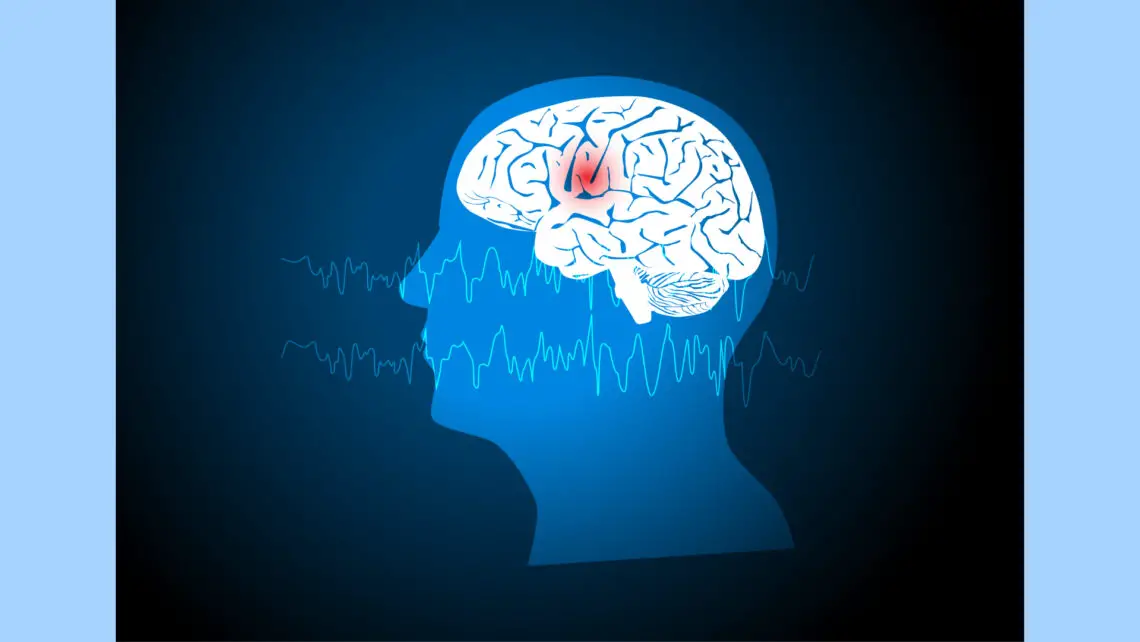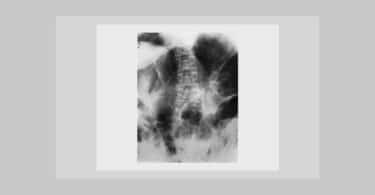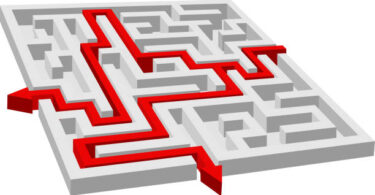Abstract:
Epilepsy is a condition that affects the nervous system and is characterized by recurrent seizures. These seizures are caused by abnormal levels of activity in the neurons of the brain. Focal seizures, which originate in limited networks within one cerebral hemisphere, pose specific challenges in treatment.
The complexities of the underlying pathogenesis make it difficult to find effective and individualized treatment approaches. This case report highlights the benefits of classical homeopathy as an alternative treatment for epilepsy. The individualized therapy not only eliminated the seizures but also enhanced the overall life quality of the patient.
By addressing the underlying cause and focusing on the individual’s overall health, classical homeopathy offers a holistic approach that may address the multifaceted challenges of focal seizures. The positive outcomes observed in this case suggest that classical homeopathy can be a valuable therapeutic option for epilepsy treatment. Further research is warranted to explore the potential of classical homeopathy in managing focal seizures and improving the quality of life for individuals with epilepsy.
Keywords: simple partial seizures, focal seizures, epilepsy, convulsions, homeopathy, case report
Background:
A seizure is an episodic event caused by an abnormal excessive or synchronous neuronal activity in the brain. Epilepsy is defined as a neurological disorder characterized by recurrent seizures. Seizures occur due to abnormal electrical activity in the brain, leading to various symptoms ranging from convulsions to brief periods of altered consciousness.1
It is estimated that around 50 million people worldwide are affected by epilepsy.2 About 12% of seizures are focal seizures.1 The causes of epilepsy can be diverse, including genetic factors, brain injury, infections, tumors, stroke, or other underlying neurological conditions.
However, in many cases, the exact cause remains unknown.3 Epilepsy can be classified into different types based on the underlying cause, seizure patterns, and other specific characteristics (Table 1).4 Seizures are commonly classified as focal or generalized.
Focal seizures (also called as partial seizures) originate in networks limited to one cerebral hemisphere, and generalized seizures rapidly engage networks distributed across both hemispheres.5The pathogenesis of focal seizures involves a complex interplay of factors that contribute to the hyper excitability and synchronization of neurons within the epileptic focus.1
The epileptic focus may result from various structural abnormalities, such as brain tumors, scars, or developmental malformations, which render the neurons in that region more susceptible to abnormal electrical discharges.3 Alterations in ion channels, neurotransmitter imbalances, and changes in synaptic connections are responsible for the hyper excitability of neurons, generating abnormal electrical signals that trigger focal seizures.1
The symptoms of epilepsy vary depending on the type and location of seizures in the brain. Other common symptoms of focal seizures include temporary confusion, staring spells, muscle stiffness, uncontrollable jerking movements, altered consciousness, and psychological symptoms such as fear, anxiety, or deja-vu.5
Understanding the pathogenesis of focal seizures is crucial for elucidating the underlying mechanisms and developing targeted therapeutic interventions.6 Techniques such as electroencephalography (EEG) and brain imaging play pivotal roles in identifying the epileptic focus, enabling accurate diagnosis and the selection of appropriate treatment strategies.1
Treatment for epilepsy often involves antiepileptic medications to prevent or minimize seizures. Additional options like ketogenic diet, vagus nerve stimulation, or surgery may be helpful.6 The variability of seizure types and severity among individuals are diverse, making it challenging to find the right treatment approach that works effectively for every patient.
The challenges in the treatment of epilepsy are multifaceted and require a holistic approach that considers not only the medical aspects but also the psychological and social needs of the patient. In such cases, classical homeopathy may offer an alternative.
Classical homoeopathy has been demonstrated to be effective in the treatment of neurological conditions in the past.7,8,9,10 This case report suggests a positive outcome for treatment of simple partial epilepsy with classical homeopathy.
Table.1. Classification of seizures by International League Against Epilepsy (ILAE), 2017
| Focal seizures: | Generalized seizures: | Unknown: | |
| Aware
(simple partial) |
Impaired awareness
(complex partial) |
Motor seizures:
– Tonic-clonic seizures – others |
Motor seizures:
– Tonic-clonic seizures – others |
| Motor seizures | Non-motor seizures | Non-motor seizures | |
| Non-motor seizures | |||
Case report:
A twenty-year-old male was diagnosed with simple partial epilepsy in 2018. The epileptic fits appeared as involuntary movements of the face and lip smacking towards right side. He never lost consciousness during attacks.
Electroencephalogram (EEG) studies were normal. The condition progressed despite the use of antiepileptic drugs. At this point, patient sought homoeopathic treatment. The first homeopathic consultation took place on 11/11/2018. The symptoms available for prescription were as follows:
- Grimaces of face during epileptic fit (++)
- Vertigo before epilepsy (++)
- Mouth – Salivation (+)
- Weakness of memory (+)
- Blue discoloration of gums (++)
- Blue discoloration of gum margins (+++)
- Throat-difficulty in swallowing liquids (+)
- Stools-hard (++)
- Extremities restlessness (++)
- Cold aggravation (++)
- Convulsions from excitement (+)
The patient also slept for 12 to 15 hours a day but this was a known side effect of the conventional medication the patient was on and hence not considered for prescription.
Past medical history:
- Vaccination: vaccinated. Last vaccination (diphtheria and tetanus) received 7 months ago.
- History of tonsillitis from six to eight years of age.
- Chickenpox at eight years of age.
- Pneumonia at the age of eight, treated conventionally.
- Appendicitis at nine years of age- underwent appendectomy.
- Last high fever – seven years ago (37.5oC)
Family history:
Mother – chronic gastritis. Grandparents –Hypertension, cardiac diseases.
Mental/emotional history
The patient exhibited the following symptoms in this plane
Fear of heights (++), insects (+), stage fear (++). Weakness of memory for numbers and lectures (+)
Personal history:
The patient was chilly (++). He slept well and felt refreshed. He craved sweets (++), and meat (++) and had aversion to cabbages (+). He was moderately thirsty (++)
General physical examination: bluish discoloration of gum margins (+++) was noticed and he had caries (++).
Diagnosis: Simple partial seizures (ICD-G40:109) 11
Conventional medicines: patient was on Eftil and Frizium
Prescription strategy: The strategy of prescription was essence and keynotes of the case (figure 1).
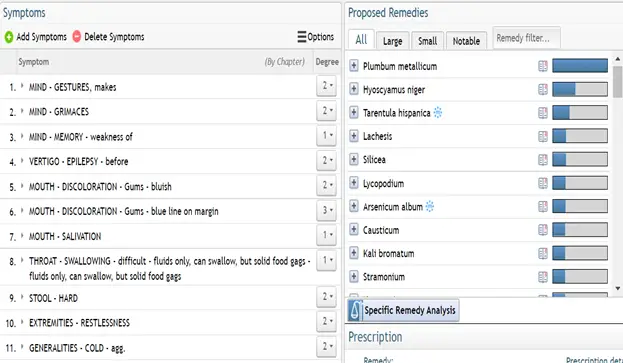
Figure 1: Repertorial result as on 11/11/2018 (Vithoulkas compass)
Prescription: A dose of Plumbum metallicum 200 CH was prescribed on 11/11/2018.
The follow up of the case is listed in Table 2
Table 2: Follow up of the case:
| Date | Symptoms | Analysis | Conventional management: | Prescription |
| 12/02/2019 | Within first two days of the remedy, grimaces reduced by 50%.
For the first month and a half, the grimaces almost disappeared, but they appeared when brushing his teeth or eating solid food. The mood improved a lot. He still slept longer, but he felt more refreshed. His appetite remained same as before, but he relished the food. He had diarrhea once and running nose several times with sore throat (old symptom) NEW SYMPTOMS: Salivation at night. Impetigo on face and head. Patient took Gentamycin for the skin complaints. Patient is angrier compared to before. |
Reaction of diarrhea was probably due to detoxification.
Antidote: Patient has used Gentamycin for his impetigo.
Patient has taken dental treatment three times in the past month.
Patient needs a higher potency of the same remedy as the symptoms seem to be relapsing from antidoting effect.
|
Patient continued to take Syrup Eftil, T. Lamictal, T. Frisium
|
Plumbum metallicum 1M one dose |
| 16/07/2019
(Fig. 2) |
Only three episodes of grimaces.
Salivation during sleep increased (+++) Two episodes of fever (37.8oC) with coryza, lasting for five days. Impetigo did not appear again. Teeth-decayed (++)
NEW SYMPTOMS: Desire for meat (++) Aphthous ulcers (+++) Impatience (+) Patient throws fits of rage during anger (++) |
New symptoms have persisted.
Mother repeated the remedy 8 times after dental treatment in the boy. The decision was hers and homeopath was not consulted. However, repetition of previous remedy did not yield any positive response.
Patient indicated a clear picture of the new remedy. (Keynotes)
|
Antiepileptic therapy- same as before. | Mercurius solubilis 1M one dose |
| 01/10/019 | Patient developed a fever of 38oC with bronchitis.
No grimaces anymore. Mouth ulcers healed. Emotionally better. No episodes of seizures noted. |
Bronchitis subsided on its own.
Patient is doing better. We must wait until any new symptoms appear or relapse of old symptoms. |
Antiepileptic therapy same as before. | Nil |
Outcome: The boy stopped treatment after October 2019. The physician knows the parents and the latest report is that he never had a relapse of symptoms. His conventional physician waited for two more years from the last seizure and discontinued the antiepileptics.
He attends school normally, sings in church, and emotionally is even better than before. The physician analysed that the anger and emotional disbalance was caused by the conventional medication, especially that the boy was going through puberty.
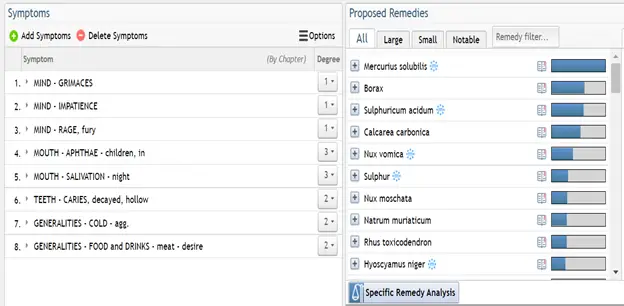
Figure 2: Repertorial result as on 16/07/2019 (Vithoulkas compass)
Discussion:
Epilepsy is a complex medical condition which is highly variable in its presentation depending on one’s predisposition.12 The goal in treating patients with epilepsy is a cost-effective approach to the elimination of seizures or a reduction in their frequency of occurrence while avoiding numerous adverse effects, so as to achieve the best possible quality of life.1
Classical homeopathy is a highly systematic method which aims to strengthen the defense mechanism of the organism to cure itself.13 While conventional therapy focuses on the end products of the disease, homoeopathy perceives the underlying cause for the development of disease.14
Signs and symptoms are generated on mental, emotional and physical levels according to one’s predisposition and are thought to be the effort of an organism to deal with the stress or infections.15 These peculiar signs and symptoms guide the homeopath to choose a simillimum.
Vithoulkas “Levels of health” theory categorizes health into four groups (A-D) and twelve levels (1-12).16 The nature and severity of pathology, past history of recurrent infections followed by absence of febrile acute conditions for a long period suggests that the patient was born in a lower level of group B according to the theory. The immune system was compromised presumably due to vaccinations before the onset of the epilepsy and the health descended down to group C, where frequent acute diseases ceased to appear and chronic disease began to manifest.16
Furthermore, the theory also suggests that appearance of an acute disease accompanied with high fever helps the organism to overcome the chronic disease and is considered as a good response to treatment.17 In the above case, after careful prescribing, the patient started to the develop skin conditions and developed a high fever following which the chronic condition improved along with overall general improvement in the health status.
The Modified Naranjo Criteria for Homeopathy (MONARCH) causality assessment yielded a score of 11, suggesting a significant causal relationship between homoeopathic intervention and clinical outcome in this case(table 3).18 Classical homoeopathy has been demonstrated to be effective in the treatment of advanced diseases in the past.19,20,21 This case report provides a solid foundation for additional research into the benefits illustrated here.
Table 3: Modified Naranjo Criteria for Homeopathy (MONARCH) – for causality assessment of both cases
| Criteria | Y | N | Not sure/NA | Score in case |
| 1. Was there an improvement in the main symptom or condition for which the homeopathic medicine was prescribed? | 2 | -1 | 0 | 2 |
| 2. Did the clinical improvement occur within a plausible time frame relative to the drug intake? | 1 | -2 | 0 | 1 |
| 3. Was there an initial aggravation of symptoms? | 1 | 0 | 0 | 0 |
| 4. Did the effect encompass more than the main symptom or condition, i.e., were other symptoms ultimately improved or changed? | 1 | 0 | 0 | 1 |
| 5. Did overall well-being improve? | 1 | 0 | 0 | 1 |
| 6 (A) Direction of cure: did some symptoms improve in the opposite order of the development of symptoms of the disease? | 1 | 0 | 0 | 1 |
| 6 (B) Direction of cure: did at least two of the following aspects apply to the order of improvement of symptoms:- from organs of more importance to those of less importance, from deeper to more superficial aspects of the individual, from the top downwards | 1 | 0 | 0 | 1 |
| 7. Did “old symptoms” (defined as non-seasonal and non-cyclical symptoms that were previously thought to have resolved) reappear temporarily during the course of improvement? | 1 | 0 | 0 | 1 |
| 8. Are there alternate causes (other than the medicine) that with a high probability could have caused the improvement? (consider known course of disease, other forms of treatment, and other clinically relevant interventions) | -3 | 1 | 0 | 1 |
| 9. Was the health improvement confirmed by any objective evidence? (clinical assessment with follow ups in this case) (occurrence of seizures were the objective clinical evidence) | 2 | 0 | 0 | 2 |
| 10. Did repeat dosing, if conducted, create similar clinical improvement? | 1 | 0 | 0 | 0 |
| Total | 11 |
Conclusion:
This case report provides a remarkable outcome for use of classical homeopathy in cases of focal seizures, when homoeopathic principles are clearly grasped and applied. However, substantial research is required to evaluate further possibilities and efficacy of the advantages observed from the therapy.
References:
- Kumar A, Maini K, Arya K, Sharma S. Simple Partial Seizure. StatPearls. Published online July 13, 2021. Accessed September 15, 2021. https://www.ncbi.nlm.nih.gov/books/NBK500005/
- Liu J, Zhang P, Zou Q, et al. Status of epilepsy in the tropics: An overlooked perspective. Epilepsia Open. 2023;8(1):32. doi:10.1002/EPI4.12686
- Patel PR, Jesus O De. Partial Epilepsy. N Engl J Med. 2021;309(9):536-539. Accessed September 15, 2021. https://www.ncbi.nlm.nih.gov/books/NBK564376/
- AM P. Epilepsy Overview and Revised Classification of Seizures and Epilepsies. Continuum (Minneap Minn). 2019;25(2):306-321. doi:10.1212/CON.0000000000000707
- S L, F B. Focal epilepsies and focal disorders. Handb Clin Neurol. 2019;161:17-43. doi:10.1016/B978-0-444-64142-7.00039-4
- Falco-Walter J. Epilepsy-Definition, Classification, Pathophysiology, and Epidemiology. Semin Neurol. 2020;40(6):617-623. doi:10.1055/S-0040-1718719
- Salloum DZ. Case Report – Epileptic Case-Part 1 – Ziad Salloum. Accessed July 2, 2023. https://hpathy.com/clinical-cases/case-report-epileptic-case-part-1/
- Ward A. A Case of Benign Rolandic Epilepsy Cured with Classical Homeopathy – Andrew Ward. Accessed July 2, 2023. https://hpathy.com/clinical-cases/a-case-of-benign-rolandic-epilepsy-cured-with-classical-homeopathy/
- MD KR. SEIZURES AND ASTHMA BOTH CURED WITH ONE HOMEOPATHIC MEDICINE • Karl Robinson MD. Accessed July 2, 2023. https://homeopathyyes.com/case-studies/clinical-casespart-iii/seizures-and-asthma-both.html
- Homoeopathic treatment of Epilepsy – A Case Report – homeopathy360. Accessed July 2, 2023. https://www.homeopathy360.com/homoeopathic-treatment-of-epilepsy-a-case-report/
- 2023 ICD-10-CM Diagnosis Code G40.109: Localization-related (focal) (partial) symptomatic epilepsy and epileptic syndromes with simple partial seizures, not intractable, without status epilepticus. Accessed July 2, 2023. https://www.icd10data.com/ICD10CM/Codes/G00-G99/G40-G47/G40-/G40.109
- Ioannou P, Foster DL, Sander JW, et al. The burden of epilepsy and unmet need in people with focal seizures. Brain Behav. 2022;12(9). doi:10.1002/BRB3.2589
- Hanhemann S. Organon of Medicine. B.Jain publishers; 1994.
- Kent JT. Kent’S Lectures on Homoeopathic Philosophy. B.Jain publishers; 2002. https://www.naturopathicmedicineinstitute.org/wp-content/uploads/2016/09/Lectures-on-Homeopathic-Philosophy.pdf
- Vithoulkas G and Tiller.w. The Science of Homeopathy. 7th Edition.; 2014.
- Vithoulkas G. Levels of Health.; 2017.
- Mahesh S, Mallappa M, Habchi O, et al. Appearance of Acute Inflammatory State Indicates Improvement in Atopic Dermatitis Cases Under Classical Homeopathic Treatment: A Case Series. Clin Med Insights Case Rep. 2021;14:1179547621994103. doi:10.1177/1179547621994103
- Lamba CD, Gupta VK, Van Haselen R, et al. Evaluation of the Modified Naranjo Criteria for Assessing Causal Attribution of Clinical Outcome to Homeopathic Intervention as Presented in Case Reports. Homeopathy. 2020;109(4):191-197. doi:10.1055/s-0040-1701251
- Tenzera L, Djindjic B, Mihajlovic-Elez O, Pulparampil BJ, Mahesh S, Vithoulkas G. Improvements in long standing cardiac pathologies by individualized homeopathic remedies: A case series. SAGE open Med case reports. 2018;6:2050313X18792813. doi:10.1177/2050313X18792813
- Tsintzas D, Jaggi A, Jaggi L, Mahesh S, Vithoulkas G. Heterotopic ossification in a 7-year-old female patient treated with individualized homeopathy: A case report. Clin Case Reports. 2019;7(12):2526-2533. doi:10.1002/CCR3.2547
- Mahesh S, Jaggi L, Jaggi A, Tsintzas D, Vithoulkas G. Individualised Homeopathic Therapy in ANCA Negative Rapidly Progressive Necrotising Crescentic Glomerulonephritis with Severe Renal Insufficiency – A Case Report. J Med Life. 2019;12(1):49-55. doi:10.25122/JML-2019-0001



